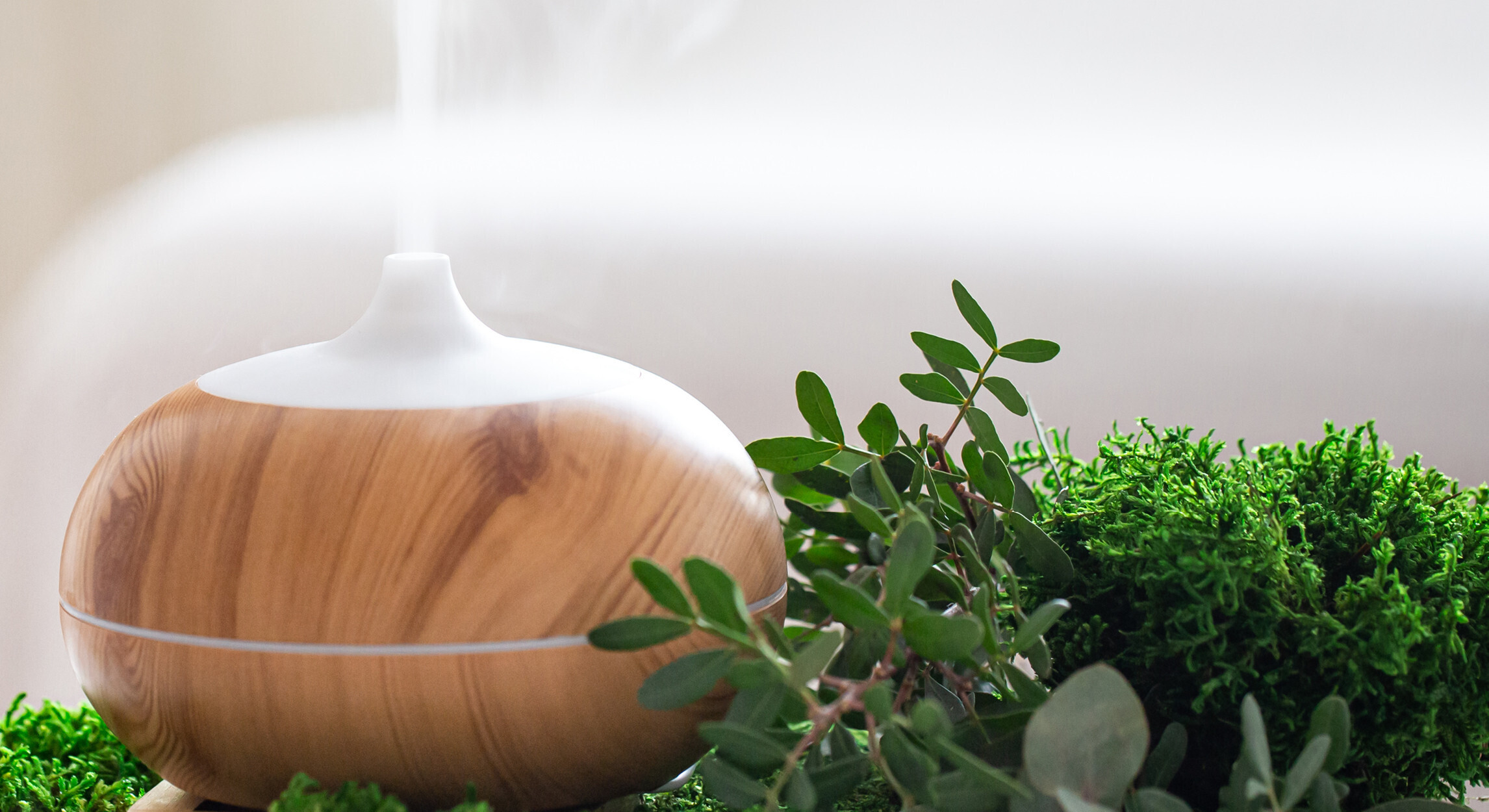Essential oils and vegetable oils are natural products derived from plants. Both can have beneficial effects on our bodies. But how can you tell them apart? What are the manufacturing methods that differentiate them? What are their respective properties and uses? In this article, we'll take you through the specific characteristics of each type of oil.
Essential oils - a concentrate of aromatic plants:
Essential oils are concentrated liquid extracts of aromatic plants. They are made up of volatile molecules that give them their fragrant and therapeutic properties. Essential oils come from different parts of the plant, such as flowers, leaves, bark, roots or fruit. For example, lavender essential oil is extracted from the flowers, lemon essential oil is extracted from the zest, and ginger essential oil is extracted from the rhizome. They are obtained by two processes: steam distillation or cold expression. Distillation involves passing water vapour through the plant, causing the aromatic compounds to evaporate. The vapour is then cooled and condensed, separating the essential oil from the water. Expression involves pressing the plant to extract the juice, which contains the essential oil. These two processes are physical transformations, which do not alter the chemical structure of the plant.
Vegetable oil - an extract from fatty plants:
Vegetable oils are fats that are liquid at room temperature. They are made up of fatty acids and vitamins, which give them their nutritional and cosmetic properties. Vegetable oils come from a variety of plant sources, such as walnuts, almonds, grape seeds, olives and avocados. For example, coconut oil is extracted from the pulp, olive oil is extracted from the fruit, and jojoba oil is extracted from the seed. They are all obtained by a single process: pressing. Pressing can be either cold or hot. Cold pressing involves pressing the plant to extract the oil, without raising the temperature above 40°C. Hot pressing involves heating the plant, which increases the oil yield but can alter its quality. This process is a mechanical extraction, which does not alter the chemical structure of the plant.
The properties of essential oils and vegetable oils:
Essential oils are highly complex products, containing hundreds of different chemical compounds, such as terpenes, alcohols, aldehydes, ketones, esters and phenols. These compounds are responsible for the pharmacological effects of essential oils, which can be antiseptic, anti-inflammatory, antispasmodic, calming, stimulating, digestive or even healing. Essential oils also have psychological effects, as they act on the nervous system and the brain, altering mood, stress, emotion and memory. Essential oils are therefore used in aromatherapy to treat physical or mental ailments, by inhaling them, applying them to the skin or ingesting them.
Vegetable oils are simpler products, containing mainly fatty acids such as omega-3, omega-6 or omega-9. These fatty acids are essential for the body to function properly, helping to regulate cholesterol, blood pressure, inflammation and coagulation. Vegetable oils also contain vitamins, such as vitamin E, which is a powerful antioxidant that protects cells from ageing and free radicals. Vegetable oils have beneficial effects on the skin and hair, nourishing, moisturising, softening and repairing them. Vegetable oils are used in cosmetics to beautify the face, body and hair, either by applying them directly or mixing them with other products.
Uses of essential oils and vegetable oils:
Essential oils are very powerful products, which must be used with care and sparingly. They can cause allergic reactions, irritation, burns or poisoning if they are used in the wrong proportions, chosen incorrectly or used incorrectly. Certain rules must therefore be observed when using them, such as : check the quality and purity of essential oils, by choosing organic products that contain no additives or preservatives; respect the doses and times of use, following the instructions of health professionals or specialist publications; dilute essential oils in a vegetable oil, gel, cream or honey before applying them to the skin or ingesting them; avoid contact with the eyes, mucous membranes, wounds or sensitive areas; carry out an allergy test by applying a drop of diluted essential oil to the crease of the elbow and waiting 24 hours; observe contraindications, avoiding the use of certain essential oils by pregnant women, children, the elderly, epileptics or asthmatics.
Vegetable oils are gentler products that can be used more easily and freely. They present little risk of allergy, irritation or toxicity, provided they are of good quality and well preserved. So make sure you : choose virgin, cold-pressed, organic and unrefined vegetable oils, to preserve their properties and smell; store vegetable oils away from light, heat and moisture, in dark glass bottles, to prevent oxidation and rancidity; adapt the vegetable oil to your skin or hair type, taking into account its needs and characteristics; use vegetable oils alone or in synergy, by mixing them with each other or with essential oils, to enhance their effects and create personalised skin care products.
In conclusion:
Essential oils and vegetable oils are precious allies for health, beauty and well-being. They are derived from different parts of plants, and have different compositions and properties. Essential oils are concentrates of volatile substances with therapeutic and psychological effects. Vegetable oils are fats with nutritive and cosmetic effects. They must be used with care and respect, taking into account their specific characteristics and indications. They can be combined to create tailor-made treatments, adapted to each person and each situation.










